Want to figure out the right type of garden stairs for your yard? Here are some great ideas for different materials and designs you can consider.
Garden stairs are a versatile landscaping feature, serving both practical and aesthetic purposes. Often, the primary motivation for installing stairs is necessity—creating a safe and accessible connection between areas of varying elevation in your yard. However, stairs can transcend mere utility and become a captivating design element.
With diverse styles and materials, garden stairs offer a creative opportunity to enhance your landscape’s visual appeal. They can guide the eye towards a captivating focal point, such as a secluded seating area or a tranquil water feature.
When planning your garden stairs, consider whether you want to create a seamless transition from your existing patio or porch or introduce a contrasting element for added visual intrigue. Matching the materials and style of your stairs to the surrounding hardscaping offers a safe and traditional approach that blends seamlessly. On the other hand, opting for a contrasting look can create a dynamic and eye-catching focal point within your garden.
Also see: How to Build a Garden Path
Garden Stairs Materials, Size & Type
The materials you select for your garden stairs will significantly influence the overall ambiance of your outdoor space. Large stone slabs and poured concrete convey a sense of authority and permanence, while wood or river stones create a more organic and subtle impression. The options are truly vast, as showcased in the images below.
Beyond their primary function of providing access, garden stairs can serve multiple purposes. They can act as a retaining wall to manage slopes, offer additional seating options, or provide a level space for showcasing a container garden or other decorative accents.
Entry stairs should be wide enough to accommodate several people at once. On the other hand, a meandering backyard path can be a single track, toned down, as visitors will most likely trickle through.
Your yard’s terrain will have the strongest bearing on your staircase’s “rise” vs “run” (vertical vs. horizontal distance) Generally, each riser should be from 5 to 8 inches tall, and the tread depth should always be 11 inches or more for safely accommodating visitors’ feet. If your space has lots of curves or switchbacks, it might be wise to consult an expert who will help you navigate any design complexities. If you’re installing stairs yourself, be sure to cross-check your selected materials with the grade where your stairs will be installed. Due to erosion, avoid loose materials on steep grades.
Depending on your space, budget, and level of experience, here are some great garden stairs ideas to get you started.
1. Rounded Retaining Stones with Mortar
Garden riverbeds are frequently built with this combination, as it mimics natural patterns while offering good structural integrity. Rounded stones are inviting and can be arranged however the installer pleases.
2. Pea Gravel with Wood Retainers
A classic look which helps to prevent erosion with defined shelves, this material combination is versatile, stylish, and can be downscaled to any desired width. As with any wood garden stairs, be sure to buy treated lumber to stave off deterioration caused by water exposure or insect damage.
3. Inlaid River Rocks or Beach Stones
This highly customizable option offers a natural feel, with a solid and colorful look. River stones are available in every size and color imaginable and offer a wide palette to designers. They can be purchased at many home improvement centers or local rock yards.
Also Read: Materials for Paths, Pavers & Steps
4. Landscape Timber
Large wooden beams can add a rustic hint of Americana to any garden path. They are usually pressure-treated to stave off water damage, rot, and pests, and can sometimes be found in weathered condition.
Important Safety Alert: Railroad Ties
Even though they are available at some home improvement stores, “railroad ties” are treated with creosote and not approved for residential use. Creosote is a possible human carcinogen, and is not safe to use in gardens, as the chemical can leach into the surrounding soil.
5. Giant Stone Slabs
Hefty, natural-edge stones can lend an authoritative spirit to a garden or home entrance. Achieving this option will most certainly demand professional help. But these stones excel in their low-maintenance, weather-resistant qualities once installed, and add an air of permanence to any space.
6. River Stones with Concrete Beams
Sloped stair ramps with occasional concrete steps offer a unique alternative which tackles a grade with a gentle incline. This stone example is flanked by rock walls, which completes an old world aesthetic.
Also Read: Planning Landscaping & Lawns
7. Formed Concrete Staircase
While formed concrete requires some expertise and equipment to install, it offers a tidy and long-lasting result once installed.
8. Large, Colored Flagstone Slabs
Because of their weight, installing large flagstones may not be a DIY job. But using large flagstones can offer a natural and substantial solution for garden paths and stairs. Flagstone runs on the less-expensive side of large hardscaping stone types, especially when compared to marble or granite. In this case, warmer tones tie the surrounding flora to the walkway.
Also Read: How to Plan the Perfect Fence
9. Slices of Natural Stone in Soil
Mixed, natural stone can be used on either a steep or shallow grade and lends a trail-like quality when accompanied by grasses, wildflowers, or other organically dispersed groundcover. Clay or denser types of soil can be used to discourage individual stones from loosening over time.
10. Square-cut Rough Flagstone
When casually arranged, 12- to 16-inch pieces of flagstone create a composed yet organic feel to any garden staircase. Small flagstones are generally held together by a thin layer of mortar, which can loosen over time when stairs are used heavily. Whenever choosing this style of stair, always be sure to check and repair loose stones on a regular basis.
Also Read: How to Plan the Perfect Fence
11. Stamped Concrete
Concrete can be stamped in a wide variety of patterns and molds. Stamped concrete steps are highly customizable and allow for some artistic creativity.
12. Smoothed and Grouted Flagstone
Another option that likely requires help to install, these smooth, finished flagstone chunks offer a slightly more refined feel when filled with grout. Rounded edges are slightly more family-friendly, and impart a slightly more nuanced surface which highlights the stone’s natural undulations.
Also Read: Curb Appeal: 10 Ways to Make Your Home Stunning
13. Uneven Natural Stones
Single-file stones can offer passage through narrow garden areas, and allow for variable grades without changing stone size.
14. Raised Wooden Stairs
While this project will require some knowledge of carpentry and basics of foundations—in this case, simple concrete piers—wooden stairs are well within the reach of many amateur DIY’ers. These stairs create a feeling of separation from the garden and can be ideal if you aim to keep visitors off of delicate undergrowth or on a path to another destination in the yard.
15. Flagstone Stairs Mixed with Cobblestones
16. Classic Brick
Bricks are a classic look that add a punch of warm color to any garden. They can be laid by amateur DIY’ers, but professional installation is usually recommended unless you have previous experience.
Mixed orientation bricks follow a rustic wood railing in a forested yard.
17. Round Retaining Bricks with Cobblestone
Great for steeper terrain, these filled, rounded retaining blocks are a great option for those wanting some visual contrast.
Also Read: How to Install a Water Feature
18. Natural Stone Chunks with Concrete Fill
Lending an Asian flare, this design does well when surrounded by other rock features. While not the easiest weekend project, you’ll find it to be a durable and lasting solution for garden stairs.
19. Potted Garden
Make the most of unused stairs by repurposing their space for an informal potted garden.
When stairs are wide enough, soften the edges with a collection of potted plants.
Also Read: 9 Ways to Boost Your Home’s Curb Appeal




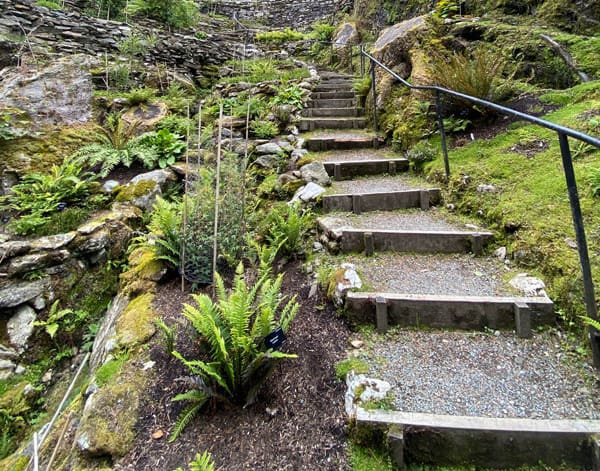



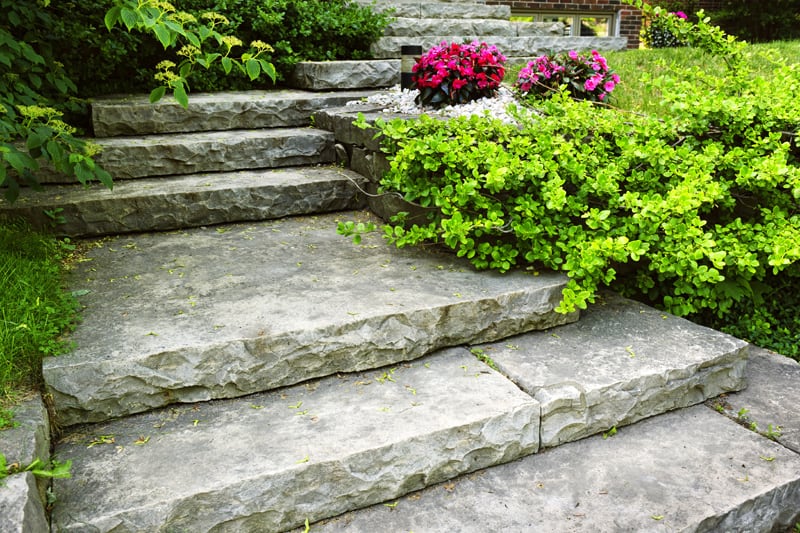


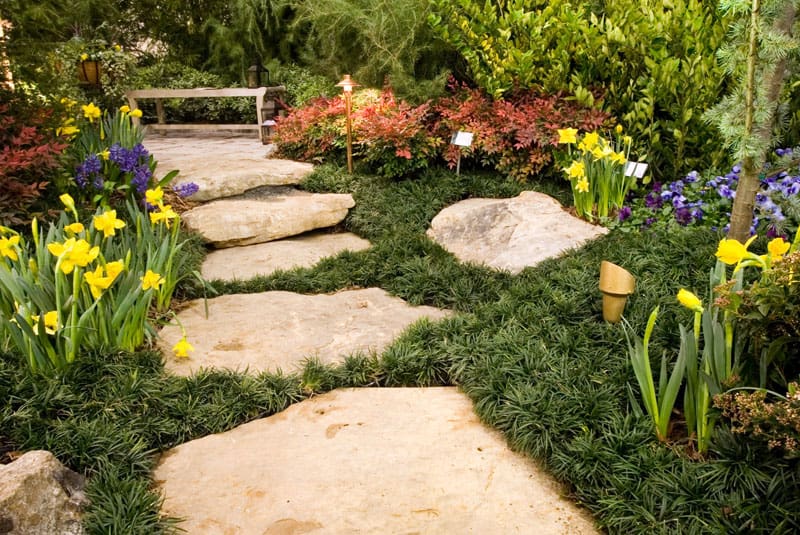

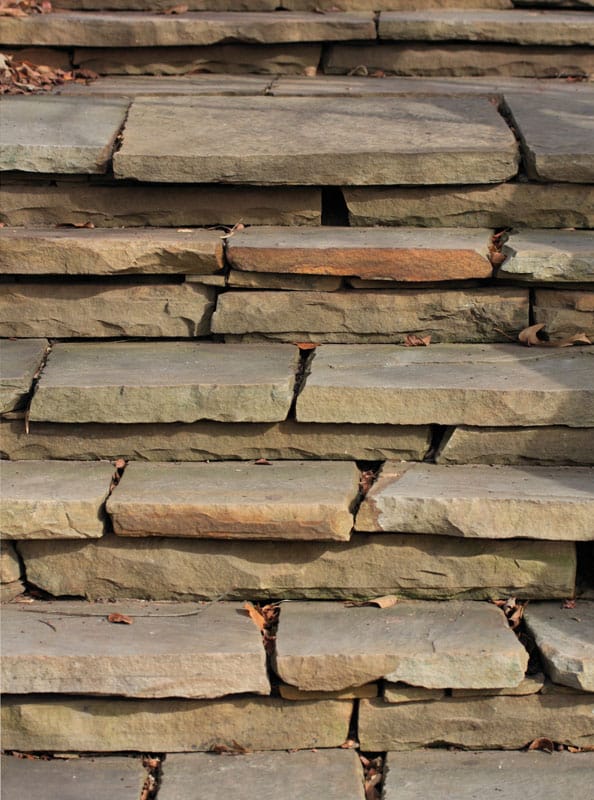


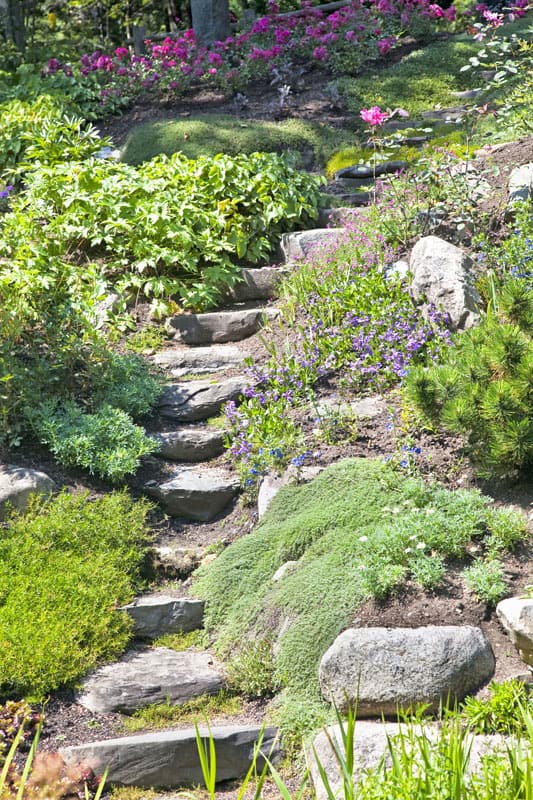
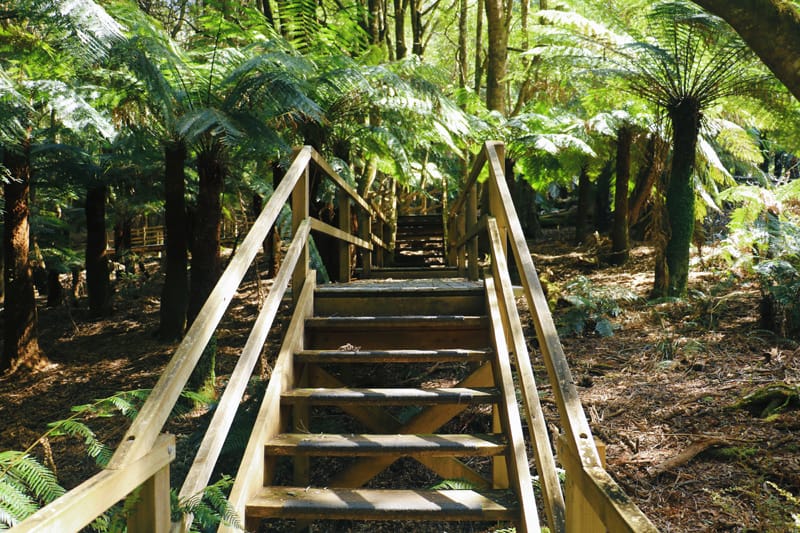



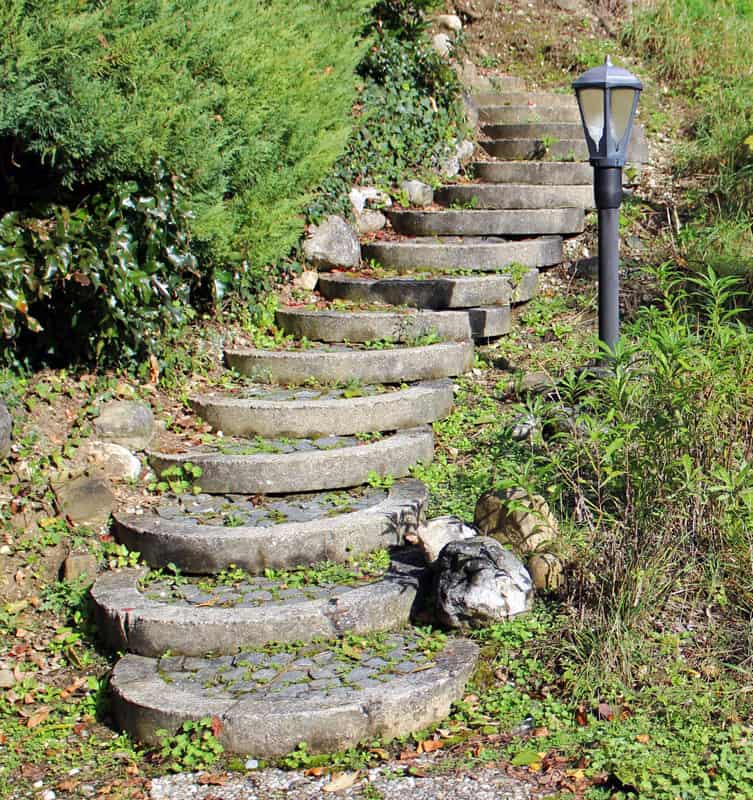







 Don Vandervort writes or edits every article at HomeTips. Don has:
Don Vandervort writes or edits every article at HomeTips. Don has:




